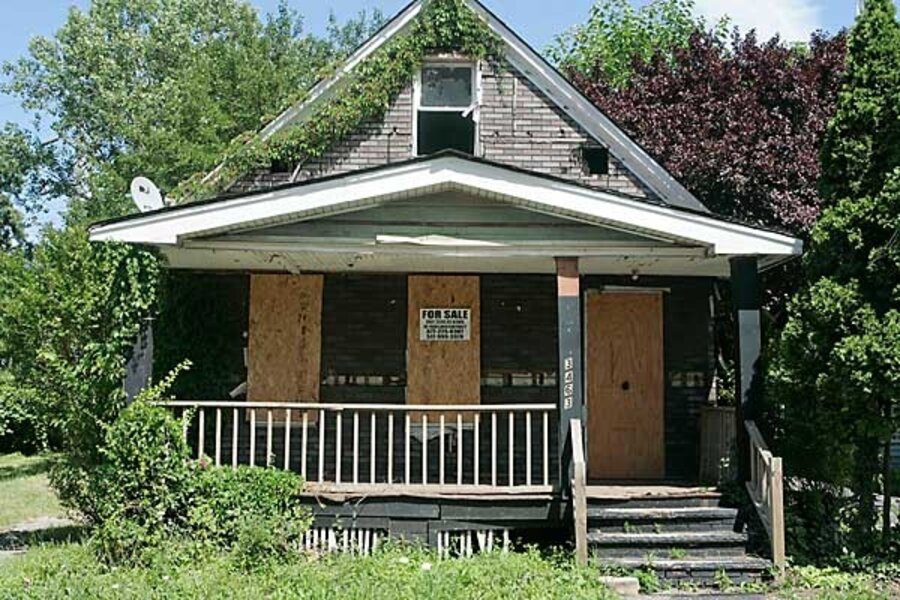Banks slow to modify mortgages
Loading...
Two of the nation's four largest banks, Bank of America and Wells Fargo, rated below average in the pace at which they are modifying loans to prevent defaults, according to the government’s first monthly progress report on its foreclosure prevention campaign.
The report, released Tuesday by the Treasury Department, found a wide variation in the help banks are offering to at-risk homeowners.
Bank of America has modified 4 percent of its home loans that are eligible for the program as of last week. (Loans must meet criteria for being at risk of foreclosure.) Wells Fargo had modified 6 percent of eligible loans. Among the big four, JPMorgan Chase has modified 20 percent of eligible loans, and Citigroup 15 percent.
The report comes after President Obama, faced with record foreclosures and a recession rooted in a housing bust, announced plans in February to spend up to $75 billion on incentives for lenders and borrowers to agree on loan modifications.
More than 230,000 loan modifications have begun since February, the Treasury Department said, and the "making home affordable" program is on track to reach a three-year target of aiding 3 million to 4 million homeowners. But the report called on banks and loan servicing firms to move at a faster clip.
By releasing data on individual firms, the administration may put pressure on some firms to do just that. The report comes at a time when the public is casting a critical eye on both bankers and federal bailouts.
Some Americans wonder what financial firms are doing to help them, after taxpayers paid to rescue those firms last fall. Voters also wonder whether the Obama administration, at a time of soaring federal deficits, should be targeting $75 billion toward an effort to help about 8 percent of American households with mortgages.
That's a matter of debate among policy experts. In one camp, skeptics of government intervention point out that many foreclosures aren't worth trying to prevent – even if the borrower is living in the home. It's often better for the borrower and lender alike to cut the mortgage cord and move on. Otherwise, there's a high risk of re-default, and the borrower may still spend an outsize share of income on housing.
Another view is that efforts to prevent loan defaults make sense, given the record number of foreclosures. Foreclosure may be "the economic solution for lenders individually, when it is not for lenders in the aggregate," said Susan Wachter, a University of Pennsylvania housing expert, at a congressional hearing last week. A glut of houses on the auction block means steeper losses for banks - and downward pressure on home prices that can lead to more borrower defaults.
The Obama program could fail to quell foreclosures, Ms. Wachter says, because too few of the loan modifications include a reduced principal balance. Falling home prices mean borrowers often remain deeply “under water,” with loan balances above the value of their homes.
A third view holds that foreclosure policies should be tailored differently because job losses push so many borrowers into default. The solution: Instead of modifying loans, the government should consider a program that provides out-of-work borrowers with bridge loan so they can keep making mortgage payments while they find a new job.
----
Follow us on Twitter.





